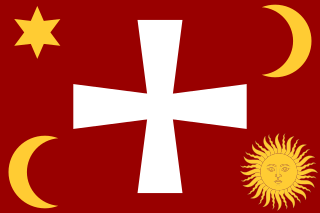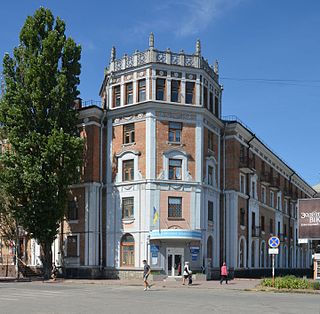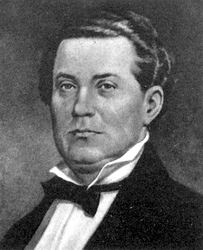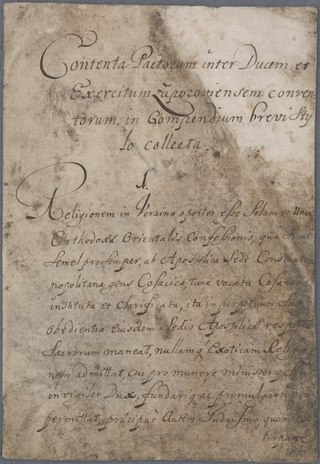
The Cossacks are a predominantly East Slavic Orthodox Christian people originating in the Pontic–Caspian steppe of eastern Ukraine and southern Russia. Historically, they were a semi-nomadic and semi-militarized people, who, while under the nominal suzerainty of various Eastern European states at the time, were allowed a great degree of self-governance in exchange for military service. Although numerous linguistic and religious groups came together to form the Cossacks, most of them coalesced and became East Slavic-speaking Orthodox Christians.

The Zaporozhian Cossacks, Zaporozhian Cossack Army, Zaporozhian Host, or simply Zaporozhians were Cossacks who lived beyond the Dnieper Rapids. Along with Registered Cossacks and Sloboda Cossacks, Zaporozhian Cossacks played an important role in the history of Ukraine and the ethnogenesis of Ukrainians.

Hetman of Zaporizhian Cossacks is a historical term that has multiple meanings.

The Zaporozhian Sich was a semi-autonomous polity and proto-state of Cossacks that existed between the 16th to 18th centuries, including as an autonomous stratocratic state within the Cossack Hetmanate for over a hundred years, centred around the region now home to the Kakhovka Reservoir and spanning the lower Dnieper river in Ukraine. In different periods the area came under the sovereignty of the Polish–Lithuanian Commonwealth, the Ottoman Empire, the Tsardom of Russia, and the Russian Empire.

Zaporizhzhia or Zaporozhzhia is a historical region in central east Ukraine below the Dnieper River rapids, hence the name, literally "(territory) beyond the rapids".

A sich, was an administrative and military centre of the Zaporozhian Cossacks. The word sich derives from the Ukrainian verb сікти siktý, "to chop" – with the implication of clearing a forest for an encampment or of building a fortification with the trees that have been chopped down.

Registered Cossacks comprised special Cossack units of the Polish–Lithuanian Commonwealth army in the 16th and 17th centuries.

Nikopol is a city and municipality (hromada) in Nikopol Raion in the south of Ukraine, on the right bank of the Dnieper River, about 63 km south-east of Kryvyi Rih and 48 km south-west of Zaporizhzhia. Population: 105.160.

Kish otaman was a chief officer of the Kish of the Zaporozhian Host in the 16th through 18th centuries.
Khortytsia is the largest island on the Dnieper River, and is 12.5 km (7.77 mi) long and up to 2.5 km (1.55 mi) wide. The island forms part of the Khortytsia National Reserve. This historic site is located within the city limits of Zaporizhzhia, Ukraine.

Zaporozhets za Dunayem is a Ukrainian comic opera with spoken dialogue in three acts with music and libretto by the composer Semen Hulak-Artemovsky (1813–1873) about Cossacks of the Danubian Sich. The orchestration has subsequently been rewritten by composers such as Reinhold Glière and Heorhiy Maiboroda. This is one of the best-known Ukrainian comic operas depicting national themes.

The Constitution of Pylyp Orlyk, formally titled as The Treaties and Resolutions of the Rights and Freedoms of the Zaporozhian Army, is a constitutional document written by the Hetman of the Zaporizhian Host, Pylyp Orlyk, the Cossack elders and the Cossacks of the Zaporozhian Army on the 5 April 1710 in the city of Bender (Tighina) in the Principality of Moldavia. It is sometimes called the First Constitution of Ukraine.

The Danubian Sich was an organization of the part of former Zaporozhian Cossacks who settled in the territory of the Ottoman Empire after their previous host was disbanded and the Zaporozhian Sich was destroyed in 1775.

Adrian Kashchenko was a well-known Ukrainian writer, historian of Zaporozhian Cossacks.

The Wild Fields is a historical term used in the Polish–Lithuanian documents of the 16th to 18th centuries to refer to the Pontic steppe in the territory of present-day Eastern and Southern Ukraine and Western Russia, north of the Black Sea and Azov Sea. It was the traditional name for the Black Sea steppes in the 16th and 17th centuries. In a narrow sense, it is the historical name for the demarcated and sparsely populated Black Sea steppes between the middle and lower reaches of the Dniester in the west, the lower reaches of the Don and the Siverskyi Donets in the east, from the left tributary of the Dnipro — Samara, and the upper reaches of the Southern Bug — Syniukha and Ingul in the north, to the Black and Azov Seas and Crimea in the south.
Pavlo Andriyovych Holovaty was a Ukrainian military figure, a Kosh Otoman of the Zaporozhian Sich and last military judge of the Zaporozhian Cossack Host. He is often confused with his younger brother, the leader of the Zaporozahian Host's successor the Black Sea Cossack Host Antin Holovaty.

Cossack with rifle, sometimes as Knight with rifle or Cossack with musket, is a former national emblem of the Cossack Hetmanate. In the early 20th century, it was used as the official national emblem of the short-lived Ukrainian State.

Zaporizhian March is an expressive Ukrainian folk musical art that was preserved and revived by bandurist Yevhen Adamtsevych. The march became more famous after its arrangement by Viktor Hutsal who merged the march with the folk song about Doroshenko and Sahaidachny.

Kost Hordiienko was a Zaporozhian Cossack Kish otaman. After 1709 he allied with Ivan Mazepa, and co-authored the Constitution of Pylyp Orlyk.
This page is based on this
Wikipedia article Text is available under the
CC BY-SA 4.0 license; additional terms may apply.
Images, videos and audio are available under their respective licenses.














